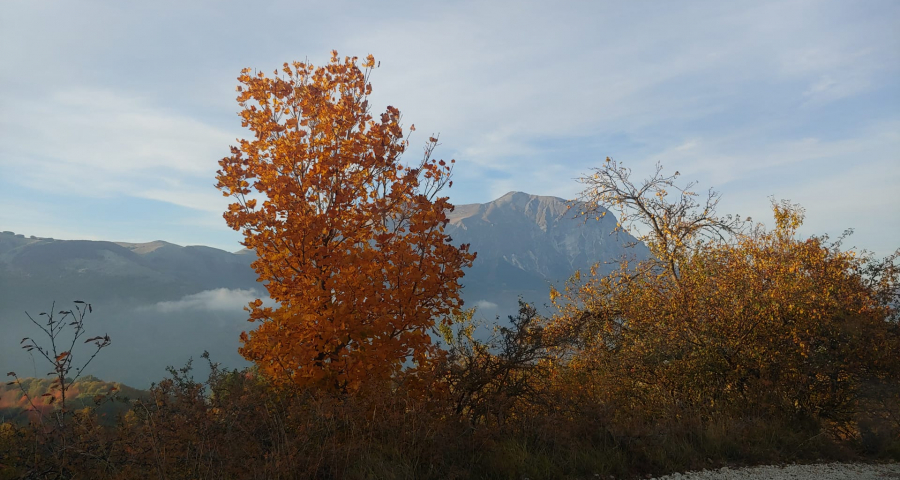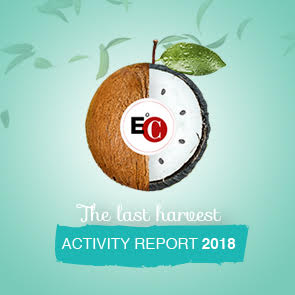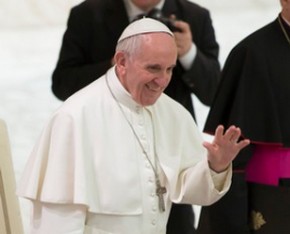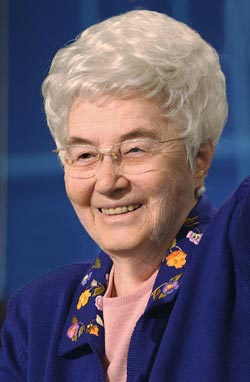The logic of charisms /7 - After their founders are gone, communities live on of they turn from "animals" into "plants".
By Luigino Bruni
Published in Avvenire 31/10/2021
"Having the power to direct the movements of the adjacent parts, the tips of the roots act like the brain of an animal."
Charles Darwin, The power of movement in plants.
There are no employees in charismatic communities, but rather dedicated people with the same DNA as the founder. That is why they are able to save themselves: the vital roots are not the past, but their present and future.
In this day and age of urgent ecological and economic change, some people are starting to look to plants in search of new inspiration, to save the planet from us and us from the planet. Because as long as we think about sustainability while remaining stuck within the same paradigm, we continue to reason as if it were possible to solve problems with the same machinery that produced them. The capitalist economic system, in particular, grew out of and according to an animal model. When the animal, Homo sapiens, had to imagine the economy, factories and companies, it designed them in its own image. We have thus built “animal” companies and institutions, that is, with a strong division and specialization of functions, with a “brain” and a “heart” on which all the other organs depend. These animal institutions have learned to run very fast, all the while becoming more and more efficient, plundering and devouring resources. Hence, the economy and GDP grew thanks to the crazy races of businesses and consumption, producing excellent results; but one day they crossed the threshold of the so-called “tragedy of the commons”, as we are all seeing now, spectators and victims alike.
The economy however has not imitated the world of plants - as we have previously written in these pages: "In the era of the spider web" (March 5, 2016). Plants, unlike animals, are anchored to the ground, and in order to respond to their extreme vulnerability as a result of being rooted to the spot, they have not developed specialized organs like animals have (if you cannot escape and you have a heart and a liver, if an animal eat one of your vital organs it will kill you). They learned to breathe, see and feel with their whole body. Hence their great resilience: you kill an animal by aiming at the heart, a plant, on the other hand, can survive even if it loses 80-90% of its body, and a severed trunk can grow a new shoot. In the Bible, we often find the image of a tree, a vineyard, a seed to indicate the People, the Church, and the Kingdom of Heaven.
The life of plants also has a lot to say to charismatic communities. These arise from one or more founders/foundresses, who give the charismatic community a form similar to that of an animal. The founder is the centre (heart) by default, and the individual organs and functions depend on that centre. This configuration is then replicated in all functions and in the various local communities, which all reproduce the same central model. Unlike the case with bureaucratic organizations, (i.e. “rationally governed by offices” and not by people's charisms), the responsibilities and roles in a charismatic community depend directly on the founder. They are created based on a relationship of complete trust, from an implicit mutual agreement of recognition. This allows the community to run very fast in the first stage of its development, to fly as high as an eagle.
However, as Max Weber has taught us, charismatic authority tends to end with the disappearance of the charismatic leader and the charisma and bureaucratic organization begin to turn into a routine. In past centuries, the charismatic phase of a movement lasted a relatively short time in general, and it was therefore easier to clearly observe the differences between the governance of the charismatic phase and the following phases. In our time, however, the founders remain in their organizations for a much longer time. Hence, a certain form of bureaucracy often develops while the founder is still at the head of his community, in order to ensure that the community life is orderly and rational. Thus, a certain charismatic bureaucracy begins. It is in this phase of a proto-institutionalization of the charism where decisive challenges for the future begin to pile up. Why?
As long as the founder is still alive, the organization is born and inevitably designed around the central and unique figure of the founder. It could not develop otherwise. However, the problems arise because these first hybrid forms of charism-institution organizations pass on to the post-founding generation as an essential part of the unchangeable heritage of the charism. The first wineskins and the wine itself become almost the same thing. Hence, when the founder leaves the scene, whoever replaces him inevitably finds him or herself inside an organization designed solely "by and for" the founder, playing a role for which he or she does not have the resources, because that role that was once conceived by the founder is simply only feasible for the founder himself.
The successor finds himself at the centre of all the connections and circulation of the community, without being able to really manage them. The founder had spiritual and human qualities and characteristics that were unique to him or her as a founder. The successor, on the other hand, cannot and above all must not perform the same function as the heart of his community - and if he does, he will create a new community. However, if he finds himself within the same governance of the founder, the problems will inevitably begin. There will often be delays in decision-making and various management bottlenecks in carrying out ordinary work. Almost all of the resources will furthermore often be used for the management of internal dynamics and as a result, there will be precious little energy left to think strategically about the future: an unmanageable situation today ends up eating up tomorrow.
This happens because when the founder begins to establish the rules and thus the role of the president and the government of his community, he has himself and his own governance in mind, and uses his experience as founder-president to design the figure and plans of future presidents and future government. Experts will often remind him that future president will not be able to carry out the exact same functions as the founder did, and the founder himself is often well aware of this; but the community and the founder have no other material to base themselves on than the past and the present. Thus, the community rule inevitably ends up being a picture of the reality that is currently writing it.
This is one of the reasons behind the struggle that movements and communities today face when trying to manage their post-foundation phase, incapable of "playing" the score left behind by the founder. So what should they do? To be completely honest, we should admit that the organization generated and wanted by the founder in a certain sense dies the same day the founder leaves the scene, it dies with the death of his heart. This is the first, decisive and inevitable vulnerability of the animal-organization generated in the first phase. The charism itself does not die, only the first organization that that charism generated. However - and this is the crux of the matter - if the first organization does not die, the charisma could end up dying in its place.
In order to avoid misunderstandings, it is necessary to keep in mind that the tradition, and often the rules written by a founder, include a part that concerns the form of life of the new spiritual personality (individual and collective), which the charism brings to the world that can change over time, but only in very marginal aspects. However, the written and oral traditions of spiritual communities (especially modern ones) often also include a description of the rules of governance, as well as the practical organization of the community. In this second part there are also foundational and original charismatic aspects that should not be lost, (a charismatic community has an essential need for a form of governance that is consistent with the charism that generated it). However, there are also practices and rules that have been designed based on the founder and his "animal-organization" and if these do not change they will soon risk blocking the development of the community. An operation that is (perhaps) easier said than done, because the disciples of the founder instinctively tend to consider the entire set of rules and tradition untouchable and "sacred", especially if the founder himself created them.
Hence, our proposal. Returning to our analogy, in the phase of transition from the founder to his successors, the charismatic organization should transform itself from an animal-organization to a plant-formed organization. Once the founder is gone, the community could replace him with a president, change hearts and leave the former governance: this solution does not work because it cannot work. However, it could also decide to change a lot to save what is essential. It would then focus on changing the "practical" aspect of the rules, creating a plant formed governance, distributing the functions, previously concentrated in the centre, throughout the entire body, thereby creating a true subsidiary governance. Like that of plants, where a parasite attack on a leaf is resolved first by the single leaf, but if this fails, the neighbouring leaves take over, then the entire branch, and then finally the furthest branches and sometimes even the nearby trees. Learn to breathe, think, and feel with your whole body. Incidentally, monastic communities are born in a similar way to plants: their centre is not the founder nor, least of all, the abbot. Their root is the rule, and so many monasteries have lived and live on for centuries, like large ancient trees.
How do you ensure the unity of a plant-organization? Plants have their own form of government, no less efficient than that of animals; it is above all concentrated in their genetic code and, for certain functions, in their roots. In the generations following the founder, the unity of the community and the governance of the most important decisions are thus entrusted to the DNA and the roots of the charism. Charismatic communities are able to do this, because unlike businesses, they have no employees: they have people with vocations, therefore with the same spiritual DNA as the founder (a Franciscan has the same "genetic code" as Francis, he does not learn it but rather discovers it, because it was already present in his soul). Its people are therefore the first guarantee that the community will have a future – both their strength and their vulnerability. Much of what the heart did before, now the whole body can do it, as long as the charism becomes a root. Underground, invisible, the roots support and feed the whole tree, they feel and, like a different brain, send messages to the whole plant, in constant dialogue with the earth. Let us not make the mistake of thinking that roots are the past, perhaps immutable and static; in plants the roots are also the past, but above all they are the present and the future. If a charisma manages to become a plant it will be resilient to crises, making it very difficult to cause it to die. However, tom do this, it must slow down, develop new senses, grow in depth, and get to know the whole forest, learning new languages to cooperate with different trees.
Plants developed their great resilience in order to respond to the challenges of the environment: a great vulnerability due to their rooting to the ground forced them to give themselves organizations that are very different from those of the animal kingdom, in order to survive and live. The vulnerability that arose from not being able to move became their evolutionary advantage. When the founders disappear, the environment changes profoundly, and a new and different vulnerability is experienced. The wisdom of plants can provide us with good advice and ideas on how to transform a weakness into a strength, and thereby continue to live: «It is like a tree planted by streams of water, which yields its fruit in season» (Psalm 1,3).








